- Home
- Peter Lovesey
Beau Death
Beau Death Read online
Also by Peter Lovesey
Sergeant Cribb series
wobble to death
the detective wore silk drawers
abracadaver
mad hatter’s holiday
tick of death
a case of spirits
swing, swing together
waxwork
Peter Diamond series
the last detective
diamond solitaire
the summons
bloodhounds
upon a dark night
the vault
diamond dust
the house sitter
the secret hangman
skeleton hill
stagestruck
cop to corpse
the tooth tattoo
the stone wife
down among the dead men
another one goes tonight
Hen Mallin series
the circle
the headhunters
Other Fiction
the false inspector dew
keystone
rough cider
on the edge
the reaper
Copyright © 2017 by Peter Lovesey
Published by
Soho Press, Inc.
853 Broadway
New York, NY 10003
Library of Congress Cataloging-in-Publication Data
is available upon request.
ISBN 978-1-61695-905-0
eISBN 978-1-61695-906-7
Printed in the United States of America
10 9 8 7 6 5 4 3 2 1
1
The kid was forever asking questions.
“What are those people doing, Dad?”
“I don’t know, son. Just looking.”
“Why?”
“Why what?”
“Why are they looking?”
“It’s some kind of building site. The contractors put those high fences round for safety, but some people like to see what’s going on, so they make little windows in the panels.”
“What’s a contractor, Dad?”
“Never mind.”
“Can I look through the little windows?”
“Not now, son. We don’t have time.”
“Please.”
“No.”
The kid had been taught the basic courtesies and he was smart enough to use them to get his way. “Please, Dad. Please.”
“Only for a moment, then.”
They crossed the road to the billboards and of course the observation window was too high for the kid, so the father had to lift him.
“What’s that, Dad?”
“I can’t see while I’m holding you.”
“That big ball.”
“What are you talking about? Let’s have a look.” The father held the kid aside for a moment. “I see what you mean. That’s a wrecking ball, son. You don’t see them much these days. They’re demolishing some old houses.” This, he now decided as a caring parent, was not such a waste of time, but should be part of the kid’s education. “It’s using what we call kinetic energy. The ball is solid steel, really heavy and hanging on a chain from the top of the crane high above the houses. The man in control pulls the ball back towards his cab with another chain and gives it a good swing at the building, like the conkers you and I played with last year. It smashes into the wall and knocks it down.” He shouted, “Wow! Just like that.”
“Can I see? Let me see, Dad.”
“Yeah. I suppose.” The destruction was so compelling that he’d forgotten the kid had his nose to the panel and couldn’t see a thing. He replaced him at the window.
“Is it going to smash the house down?”
“Not in one go. See if the ball is being hoisted back.”
“It is, Dad.”
“Good. Watch what happens, son.” Shame the peephole wasn’t big enough for two to look through at the same time.
“Crrrrrrrrash!” yelled the kid. And then on a disappointed note, “It’s still there.”
“I told you it takes several goes. Let’s see.” The kid was thrust aside again. “Yes, he’s hauling it back for another try.”
“Let me see.”
“In a tick.”
“Da-a-d.”
“Hold on, son.”
The ball smacked into the top floor of the end house of the terrace and produced a cloud of dust. Destruction is appealing. All along the barrier, people at the observation windows gave cries of satisfaction.
“Da-a-a-ad.”
Like everyone else, the father was waiting for the dust to disperse to see the hole in the masonry.
“Nice one.”
Belatedly the kid was given his chance to check the damage.
“Now you know what happens.” The show wasn’t over, but the father had decided it was time to move on. He lowered the kid to the ground.
“I didn’t see.”
“Course you did.”
“Give me another look. Please.”
It was true that the kid had missed the best action. The father peered through again to check that the secondary steel rope was taut in preparation for another smack at the building. “Last time, then.” He lifted the kid again.
More shouts greeted another hit from the wrecking ball.
The kid said with delight, “Crrrrrrrrash!”
“Impressive, eh? That’s enough, then. We’ve got to get on.”
“Dad, what’s that man doing?”
“What man?”
“The man in the house.”
“There’s nobody in the house, son. It’s empty. It’s being demolished.”
“A man in funny clothes sitting in a chair. Look.”
“I’ve told you before, you mustn’t make things up.” He shifted the kid from the window and looked for himself. “Oh Christ.”
In the attic of the end house, now ripped open, was a crumpled figure in an armchair. The dust from the demolition had coated it liberally and it was a parody of the human form held together by what appeared to be long outmoded garments: olive green frock coat, cravat, grey breeches, wrinkled white stockings. The head, sunk grotesquely into the shoulder bones and partially covered by a long black wig, was a skull and the hands resting on the chair arms were skeletal.
“Can you see the man now, Dad?”
“I can.”
“Is he dead?”
Spectacularly, irreversibly, abso-bloody-lutely dead, but you couldn’t say that to a small child. “Em, he could be just a dummy like you see in dress shop windows.”
“I’ve never seen a dummy like that. Can I have another look?”
“Definitely not. We’re leaving.”
In the next hour, the observation windows were more in use than ever on the demolition site in Twerton, the south-westerly suburb of Bath. People were waiting their turn for a look. All work had ceased. The foreman had called the police. A number of patrol cars and vans were lined up on what had once been a narrow road in front of the condemned terrace. But no one had yet started any kind of close examination of the occupant of the attic. Slumped in its chair, exposed to the daylight, the weather and the gaze of everyone, the skeleton was a treat for voyeurs and a rebuke for anyone who believed in respecting the dead. Normally a forensic tent would have been erected by now, giving the deceased some kind of privacy.
The difficulty was that the wrecking ball had rendered the building unsafe. The floor might well give way if anyone tried using a ladder to get near.
“What we need,” the senior police officer on the ground said, “is one of those basket cranes they use to inspect street lamps.”
“Cherry picker,” his assistant said.
“Right. See if you can get one. If nothing else, we’ll get a closer look at the poor blighter.”
“One is already on its way,” someone else spoke up.
“You mean I’m not the first to come up with this brilliant suggestion?” Detective Superintendent Peter Diamond swung around to see who had spoken. “Oh, you,” he said to Dr. Higgins, the police surgeon who routinely attended fatal incidents. “Should have guessed you’d be here chucking your weight about.”
“That’s rich, coming from you,” Higgins said, but with a grin. He was about half Diamond’s size. “It was my call, so it’s my cherry picker and my duty to inspect the corpse and decide whether life is extinct.”
“Isn’t that obvious?”
“It’s the law, Peter, and you know it.”
After making a show of another long look, Diamond said, “Unless my eyes are deceiving me, that thing up there is a skeleton. He’s been out of it a few years. A few hundred years, if his clothes are anything to go by. No one here is going to report you if you declare him dead without getting close up.”
“Sorry. You’ll have to take your turn.” The doctor meant business. He was already wearing a bright yellow hard hat.
Diamond turned back to his assistant, Keith Halliwell. “What’s his game?”
“Dunno, guv. Does he want a ride in the cherry picker? Some people never grow up.”
“Where’s the site manager?”
“Gone. They all buggered off home.”
“Do we know who owns these houses?”
“Some private landlord. There was subsidence reported a couple of years ago and when the borough surveyor was called he declared the whole terrace unfit for habitation. The tenants had to leave and it was boarded up while the legal formalities were gone through.”
“That figures,” Diamond said. “There’s an appeal process.”
“Meanwhile some squatters found their way in and occupied it.”
“They would.”
“Finally a demolition order was made by the council and here we are.”
“But a ten-foot fence makes me suspicious. There’s more to this than demolition.”
“Someone must have paid for the perimeter fence.”
“That’s what I’m saying. Anywhere in Bath is a prime site. Mark my words, Keith—some sharp dealing has been done here.”
“Speculators?”
“They like to call themselves developers. And nobody thought to tell the guy in the attic.”
Halliwell had worked with Diamond long enough to treat his deadpan remarks as serious conversation. “No one knew he was there. It’s not a proper attic room from what I can see. I’d call it a loft.”
The cherry picker trundled in soon after and took up a position in front of the gaping building. Dr. Higgins in his hard hat stepped into the basket as if he was about to lift off from Cape Canaveral, pressed the right buttons on the control panel and was hydraulically raised to the level of what remained of the roof.
“Get your stethoscope out, doc,” Diamond shouted up. “We’re all watching.”
There was no response from above, but the diagnosis didn’t take long.
Only after the machine was lowered did Higgins say, “There was no call for sarcasm, Peter. It could have been a plastic skeleton put there by students. Didn’t that cross your mind?”
“Actually, no. Are you satisfied he’s real?”
“I am now. Real—and well and truly dead.”
“Job done, then,” Diamond said. “I’ll go up and introduce myself. How does this thing work?”
“Haven’t you used one before? You’ll need the hard hat.”
“I’m not going to fall out of the bloody basket.”
“Health and safety. I’m a doctor, remember.”
“Ridiculous.”
With so many witnesses, Diamond was forced reluctantly to comply. Being stubborn, he borrowed a white Avon and Somerset helmet from a police motorcyclist and wore it with the visor up and the straps hanging loose.
The advisability of protective headgear was proved at once. His efforts at the controls were cack-handed. There were smiles all round when the basket made a jerky ascent.
He didn’t learn much from his first close look at the skeleton. The figure was well coated in every sense. No doubt it had gathered dust from centuries in the loft, and the latest covering of powdered mortar had spread over that wherever it could settle. Only in a few places did the fabric of the eighteenth-century clothes show through. The skull with its lopsided black wig was at a weird angle, supported by the left shoulder. It was toothless.
As for the chair, it could have been from any period, with sturdy wooden legs, high upholstered back and armrests. There didn’t seem to be any other furniture about, but not much of the loft space was visible. Broken tiles were scattered across the floor.
How does a thing like this happen? Diamond asked himself. “I’m just going up into the loft, dear, and I may be some time.” Heart attack, stroke, overdose? The poor guy had found some privacy here, for sure, but why hadn’t anyone gone looking for him? A missing person must have caused some concern, even a century or more before the police were created.
The big detective gripped the crossbar and leaned as far forward as he dared for a better view. Too far forward.
To his alarm he lost balance and felt himself tipping. His face came within inches of the skull. Only by flexing his legs and hanging on to the bar did he avoid a catastrophic nosedive.
In the middle of this undignified manoeuvre, something flashed.
“Sonofabitch.” He knew what it was. Should have expected it. “Keith, grab that camera.”
A great picture for the papers, him in his police helmet leaning out of the cherry picker like Narcissus face to face with his reflection, except it was the skeleton. Muttering obscenities, he fiddled with the controls until one swung the boom left and another jerked him savagely to terra firma.
Halliwell had gone in pursuit of the press photographer, but with little chance of success. The age gap was probably twenty years. Presently he returned, panting and apologetic. “None of us spotted him on the site, guv. We were all watching you.”
This investigation was off to a bad start.
Little else could be done that afternoon. They ordered scaffolding for the front of the building, but the crew couldn’t start for at least an hour and then it wouldn’t be simple. A platform for access would have to be constructed and a waterproof canopy rigged over the top.
“This is going to eat into our budget,” Diamond complained to Halliwell. “It’s already a major operation and it isn’t even a crime scene.”
“It could be.”
“If it is, it’s a cold case and they don’t come colder than this.”
2
Peter Diamond’s picture was in close-up in every newspaper next morning, his startled face under the police helmet near enough to kiss the skull. The caption-writers had excelled themselves:
do you know why i pulled you over?
what do you mean—no comment?
you’re nicked—300 years too late
you have the right to remain silent
response times scandal
And some of the reporting was just as barbed. “Veteran detective Peter Diamond . . .” Veteran—an insult to a man still in his prime. “. . . commandeered a cherry picker yesterday to interview a suspicious character lurking in the loft of a half-demolished building in Bath and was surprised to find himself face to face with someone older than himself, a complete skeleton in frock coat and breeches seated in an armchair. It is believed from the style of clothes that the
unfortunate victim must have been hidden there for up to three hundred years. Because of the dangerous state of the building it was not possible yesterday to remove the skeleton from the loft. ‘We have no idea of his identity,’ a police spokesman said, ‘and we are unable to speculate on possible causes of death. Detective Superintendent Diamond will issue a statement in due course.’”
Police spokesman, indeed. Total bollocks. No one from the press had come near the police after the snatched photograph.
Social media had gone viral on the story. The picture was all over Facebook and every other interactive site. Something about Diamond’s expression, the staring, drop-jawed alarm in the pudgy, helmeted face, made it a classic.
In his latest workplace, the new CID office in Concorde House, an undistinguished block in Emersons Green on the edge of Bristol, the man himself was under siege. Calls were coming in from press people across the world wanting follow-up interviews. Officially he was unavailable for comment, in meetings all day, dealing with matters of much more importance. In reality he was with Georgina Dallymore, the assistant chief constable, talking about damage limitation.
“Couldn’t you have sent up someone else in the cherry picker?” Georgina asked.
“What difference would that have made? The press would still have got their picture. I can’t understand what the fuss is about.”
“It’s you, Peter. Your face.”
“What’s so special about my face? I’m not one of these celebrities they’re always banging on about. The public don’t know who I am.”
“They do now.”
“I don’t get it.”
“Everyone else does. That’s the point. It’s comical. You’re pop-eyed, like some kid on a rollercoaster.”
“I was pop-eyed with panic because I nearly fell out of the basket. I barely managed to save myself. None of the papers mention that.”
“Just as well. It wouldn’t make it any less amusing.”
“It will all be forgotten tomorrow.”
“Don’t count on it,” Georgina said. “Everyone in this place has it on their hand-held device. I’ve got it on mine. We’ll be sharing it for months to come.”
His opinion of humanity at large had always been low, and now it took another dive. “Did you call me in about this nonsense, ma’am?”

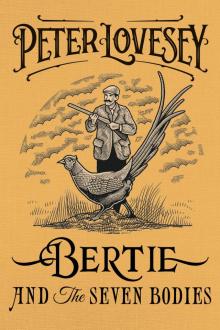 Bertie and the Seven Bodies
Bertie and the Seven Bodies The Headhunters ihmi-2
The Headhunters ihmi-2 Diamond Solitaire pd-2
Diamond Solitaire pd-2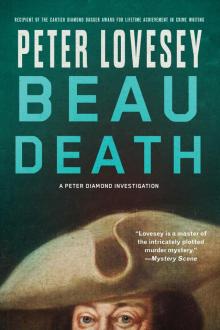 Beau Death
Beau Death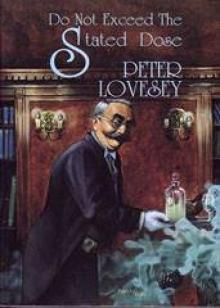 The Case Of The Dead Wait
The Case Of The Dead Wait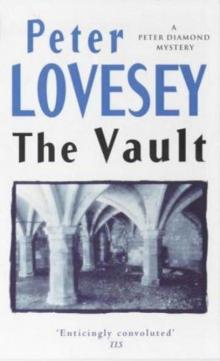 The Vault
The Vault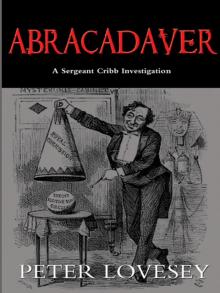 Abracadaver sc-3
Abracadaver sc-3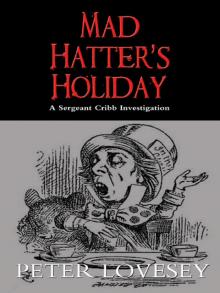 Mad Hatter sc-4
Mad Hatter sc-4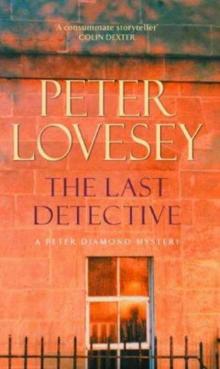 The Last Detective pd-1
The Last Detective pd-1 The Reaper
The Reaper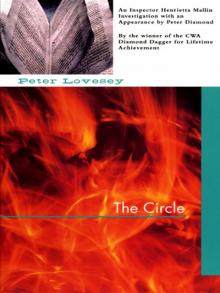 The Circle
The Circle The False Inspector Dew
The False Inspector Dew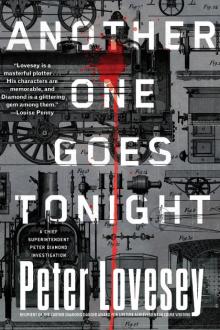 Another One Goes Tonight
Another One Goes Tonight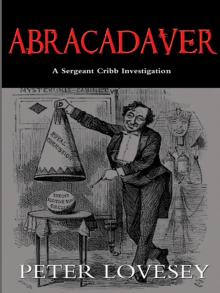 Abracadaver
Abracadaver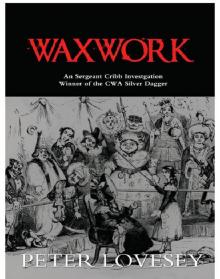 Waxwork sc-8
Waxwork sc-8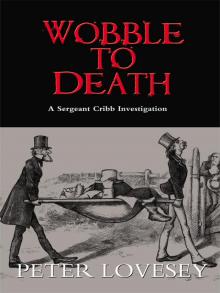 Wobble to Death sc-1
Wobble to Death sc-1 Peter Diamond - 09 - The Secret Hangman
Peter Diamond - 09 - The Secret Hangman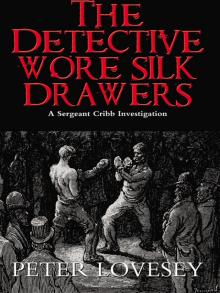 The Detective Wore Silk Drawers sc-2
The Detective Wore Silk Drawers sc-2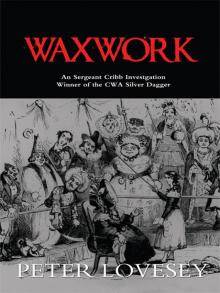 Waxwork
Waxwork The Summons
The Summons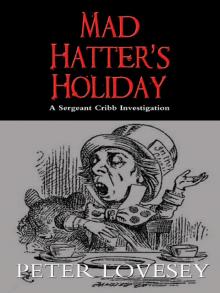 Mad Hatter's Holiday
Mad Hatter's Holiday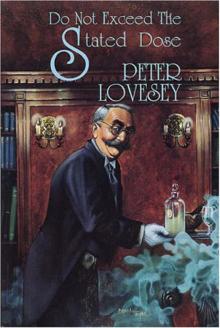 Do Not Exceed the Stated Dose
Do Not Exceed the Stated Dose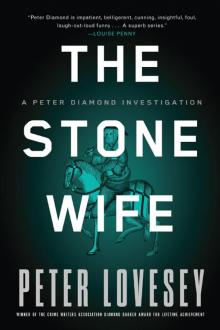 The Stone Wife
The Stone Wife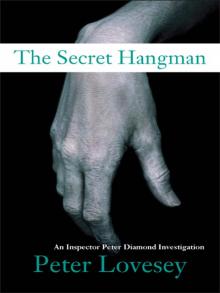 The Secret Hangman pd-9
The Secret Hangman pd-9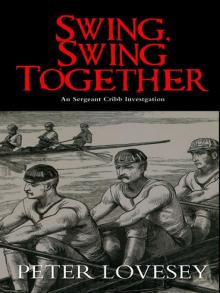 Swing, Swing Together sc-7
Swing, Swing Together sc-7 Upon A Dark Night
Upon A Dark Night Bloodhounds
Bloodhounds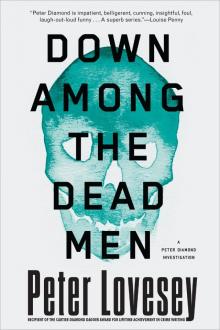 Down Among the Dead Men
Down Among the Dead Men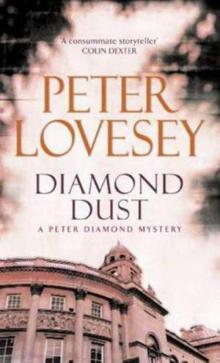 Diamond Dust
Diamond Dust Dead Gorgeous
Dead Gorgeous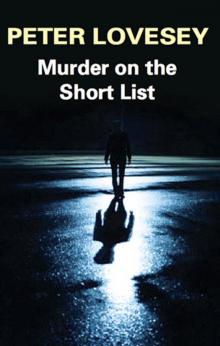 Murder on the Short List
Murder on the Short List The Usual Santas
The Usual Santas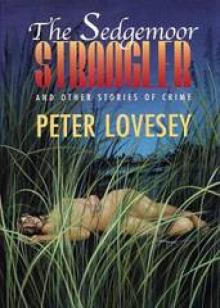 The Perfectionist
The Perfectionist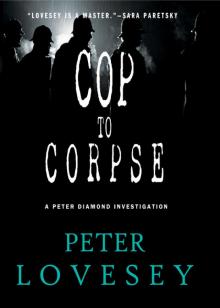 Cop to Corpse
Cop to Corpse Rough Cider
Rough Cider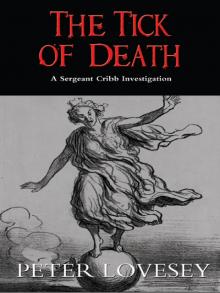 The Tick of Death
The Tick of Death Bloodhounds pd-4
Bloodhounds pd-4 Remaindered
Remaindered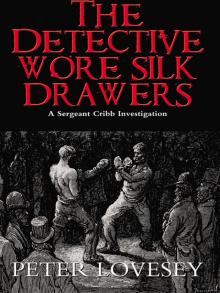 The Detective Wore Silk Drawers
The Detective Wore Silk Drawers The Circle ihmi-1
The Circle ihmi-1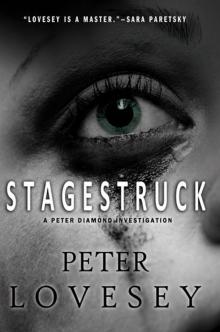 Stagestruck
Stagestruck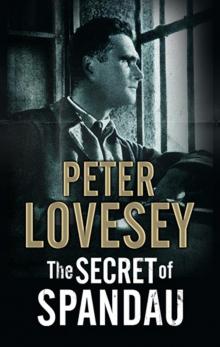 The Secret of Spandau
The Secret of Spandau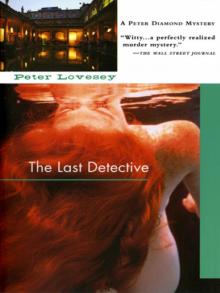 The Last Detective
The Last Detective A Case of Spirits sc-6
A Case of Spirits sc-6 The Headhunters
The Headhunters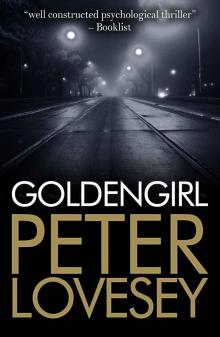 Goldengirl
Goldengirl The Summons pd-3
The Summons pd-3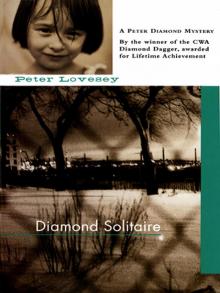 Diamond Solitaire
Diamond Solitaire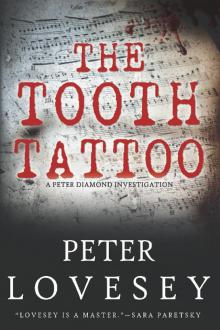 The Tooth Tattoo
The Tooth Tattoo The House Sitter
The House Sitter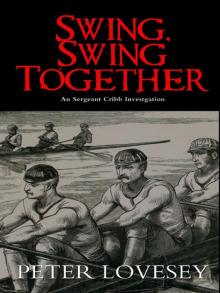 Swing, Swing Together
Swing, Swing Together